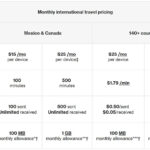For many years, Verizon Message + (often stylized as Message+) was Verizon’s answer to advanced mobile messaging, offering features beyond standard SMS and MMS texts. It aimed to provide a richer, more integrated communication experience for Verizon customers. However, the mobile messaging landscape has evolved, and Verizon Message + has largely been phased out in favor of more universally adopted standards.

What Was Verizon Message +?
Verizon Message + was a proprietary messaging application developed by Verizon for its customers. Available on smartphones, tablets, and even via a web interface, it offered several enhancements over traditional texting:
- Rich Communication Services (RCS) Features: Before RCS became widely standardized via Google Messages, Verizon Message + provided early versions of features like typing indicators, read receipts, and larger group chat capabilities (though often limited to other Message+ users).
- Multi-Device Syncing: A key feature was the ability to send and receive texts across multiple devices linked to the same Verizon number, such as a phone, tablet, and computer.
- Wi-Fi Calling and Texting: Allowed users to make calls and send texts over Wi-Fi, useful in areas with poor cellular reception.
- Enhanced Media Sharing: Supported sending larger photos, videos, and audio files than standard MMS allowed.
- Customization: Offered various themes and personalization options.
Read more about: verizon messaging app
The Shift to Universal Standards: Why Verizon Message + Was Phased Out
While Verizon Message + offered significant benefits, the mobile industry began moving towards a universal standard for advanced messaging: Rich Communication Services (RCS) Universal Profile, powered primarily by Google Messages on the Android platform.
Verizon, along with other major US carriers, agreed to adopt Google Messages as the default messaging app for Android smartphones sold on their networks. This decision aimed to:
- Improve Interoperability: Ensure a consistent RCS experience across different carriers and devices, allowing features like read receipts and high-resolution media sharing to work seamlessly between users on different networks using compatible apps.
- Streamline Development: Focus efforts on a single, universally adopted platform rather than maintaining separate, proprietary apps like Verizon Message +.
- Leverage Google’s Infrastructure: Utilize Google’s Jibe platform for RCS backend services, ensuring widespread compatibility and ongoing feature development (like end-to-end encryption).
The End of an Era for Verizon Message +
As a result of this strategic shift, Verizon began phasing out Verizon Message +. Users were prompted over time to transition to Google Messages or their phone’s native SMS/MMS application. While some features might still linger on older devices or specific platforms for a time, the app is no longer actively supported or promoted as Verizon’s primary messaging solution. For most users, the Verizon Message + service has been discontinued.
Modern Messaging on Verizon Today
So, what do Verizon customers use for messaging now?
- Android Users: The default messaging app on new Android phones sold by Verizon is typically Google Messages. This app provides full support for the RCS Universal Profile, offering features like typing indicators, read receipts, high-resolution photo/video sharing, enhanced group chats, and end-to-end encryption for one-on-one conversations between Google Messages users. It seamlessly handles standard SMS/MMS messages as well.
- IPhone Users: iPhone users on Verizon continue to use Apple’s IMessage service for messaging between Apple devices, which includes similar rich features. Messages sent to or received from non-Apple devices (like Android phones) are handled via standard SMS/MMS.
Moving Forward from Verizon Message +
While Verizon Message + served its purpose by bringing enhanced messaging features to Verizon customers early on, its transition paved the way for a more unified and interoperable messaging future, primarily through Google Messages on Android. Users who previously relied on Verizon Message + now benefit from the broad compatibility and ongoing development of the RCS standard within Google Messages, ensuring a feature-rich experience when communicating with users across various devices and carriers.


